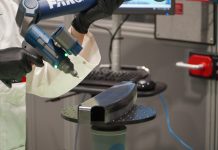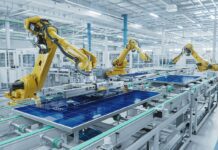Sponsored Content by
Part 5: Taking a holistic approach
Smart factories are the future of Australian manufacturing. Characterised by digital technology, real-time data-driven systems, automation and artificial intelligence and machine learning (AI/ML), the modern smart factory is an achievable goal for manufacturers of all sizes, across all industries.
“Industry 4.0 technologies enable manufacturers to achieve many business advantages, including doing more with less, reducing waste and strengthening their value chain. They are resilient and ready for disruption, and already seeing results,” says Angeline Maronese, Managing Director ANZ at Rackspace Technology.
Common denominators for those that succeed in their journeys of digital transformation are the ability to plan, engage the right transformation partner and take a holistic approach.
Here’s how to begin taking a holistic approach for your smart factory transformation:
Plan for a top-down transformation
Don’t expect your smart factory transformation to happen overnight. Capitalising on Industry 4.0 requires an integrated, top-down approach to driving end-to-end transformation across organisations, processes and technologies.
“Smart factory transformations are typically multi-year, company-wide journeys that need to be driven by leadership,” says Maronese.
“Manufacturers need to build digital factories that react to consumer demands and personalisation in real-time. This fundamental shift demands a new set of skills, such as understanding the potential of the Industrial Internet of Things, cloud, and new operating models.”
A successful smart factory transition
When bone repair specialist Cerapedics wanted to transition to a smart factory, it was important for the manufacturer to find the right partner. It wanted to better manage its vast amount of data and use it to maintain and enhance production, improve cost-effectiveness, efficiency and analytics capabilities, and enable real-time monitoring of the entire three-week production of its FDA-regulated product.
Already using AWS, but lacking in-house expertise across several cloud disciplines, the company decided to partner with Rackspace Technology. As an AWS (Amazon Web Services) Premier Partner with extensive expertise in IoT, machine learning, advanced data analytics and the healthcare industry, Rackspace Technology was ideally placed to help. Read more about the transformation here.
Follow Rackspace’s recommendations
The smart factory transformation experts at Rackspace recommend four stages in a typical successful smart factory transformation: building the foundation, modernising the data architecture, setting the stage for more innovation, and building intelligent applications.
“We recommend manufacturers take the time to develop business use cases that provide maximum benefit to plant through operational efficiency, and prioritise backlog of use cases,” says Maronese.
“They’ll also benefit from identifying data sources of critical equipment and metrics they’d like to visualise, develop a solution architecture to collect, aggregate and store data in cloud services for analysis, and develop machine learning models and visualisation capability to analyse and use data in real-time.”
See the previous articles in the series: Part 1: Building the foundation, Part 2: Modernising the data architecture, Part 3: Setting the stage for more innovation and Part 4: Building intelligent applications.
Video Source: Youtube, Rackspace


















